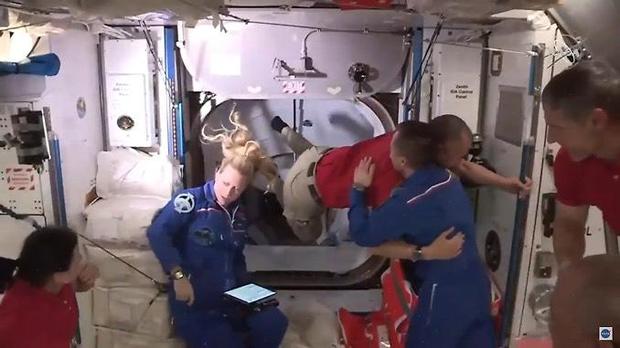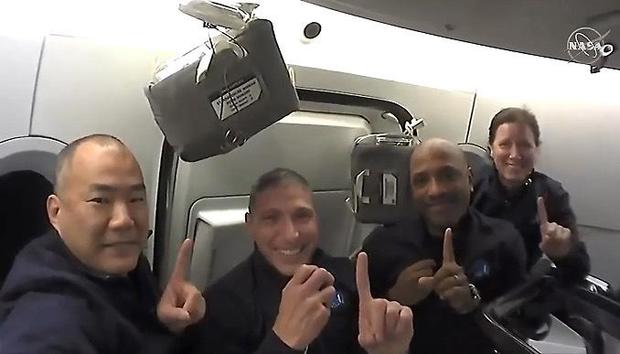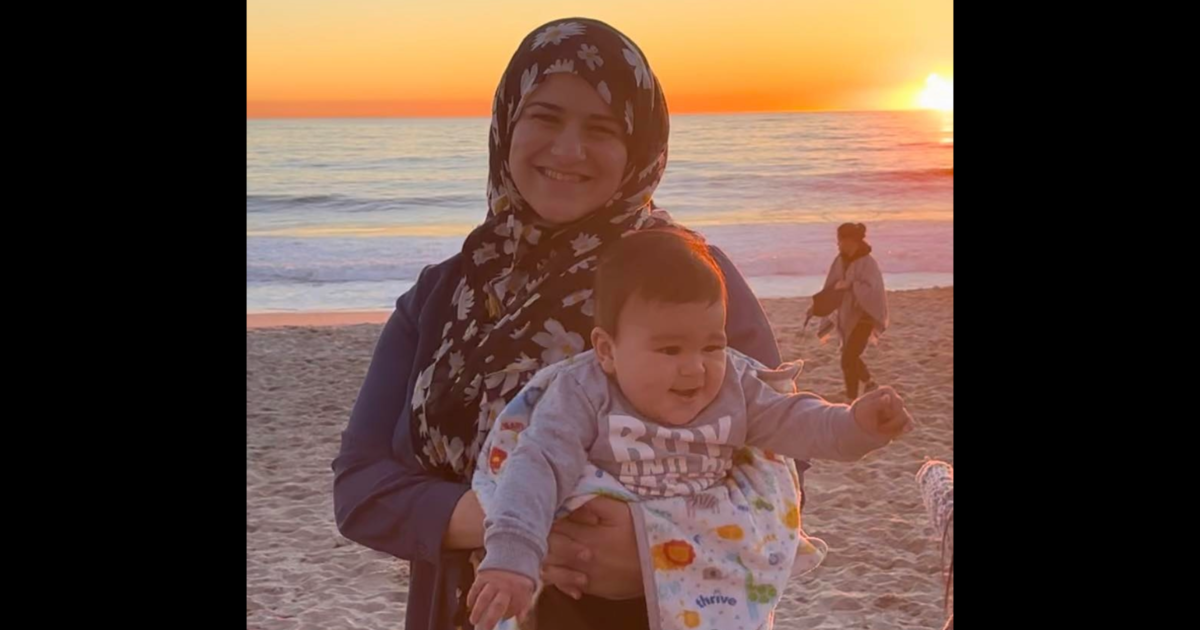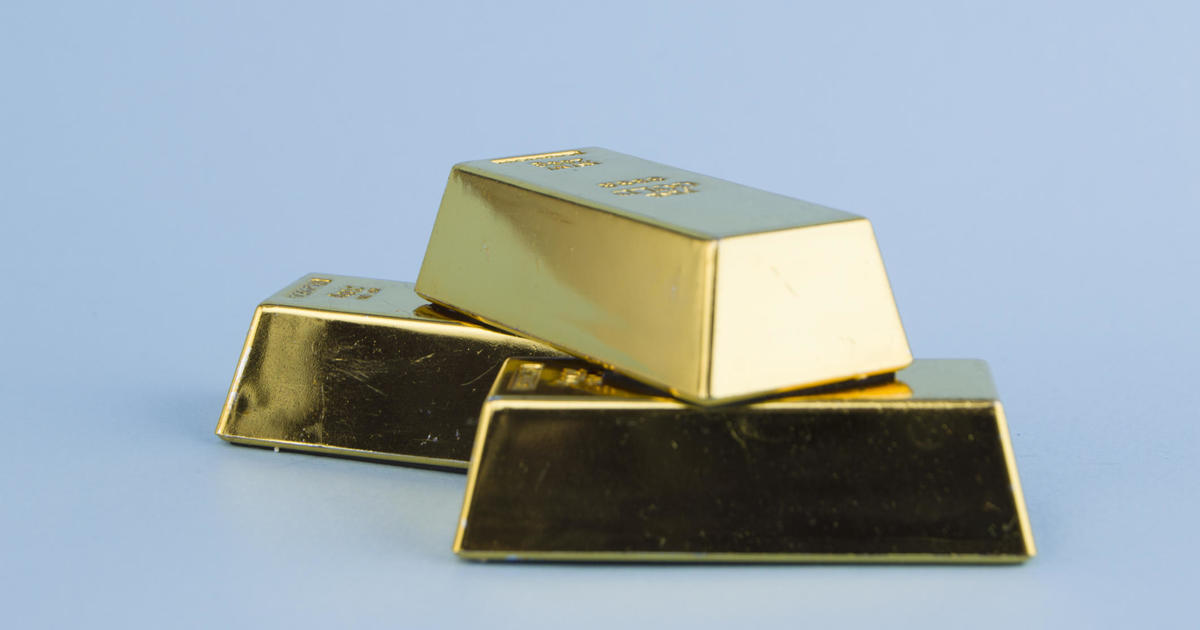SpaceX Crew Dragon capsule chases down and docks with International Space Station
Following a sky-lighting blastoff Sunday, the SpaceX Resilience capsule and its three-man, one-woman crew chased down the International Space Station and glided to a flawless docking late Monday, boosting the lab's crew to seven and adding an extra set of hands for scientific research.
With commander Michael Hopkins and pilot Victor Glover monitoring the approach, flanked on the left by Japanese astronaut Soichi Noguchi and on the right by Shannon Walker, the Crew Dragon's docking mechanism engaged its station counterpart at 11:01 p.m.
"Resilience, SpaceX. Docking sequence is complete," called SpaceX mission control communicator Anna Menon. "Welcome to the ISS."
"SpaceX, this is Resilience," Hopkins replied. "Excellent job, right down the center. SpaceX and NASA, congratulations. This is a new era of operational flights to the International Space Station from the Florida coast. And ISS, Sergey, Sergey and Kate, we'll see you real soon."
Following leak checks to verify an airtight structural seal, Expedition 64 commander Sergey Ryzhikov, Sergey Kud-Sverchkov and NASA astronaut Kate Rubins, who were launched to the outpost aboard a Russian Soyuz spacecraft on Oct. 14, welcomed their new crewmates aboard with smiles, hugs and handshakes.
"Wow, I can't tell you how great it was to see you all come across the hatch," radioed Kathy Lueders, director of space operations at NASA Headquarters. "I can't tell you how proud we are of you and how much we want to congratulate you on this historic mission. It's been really cool to watch you."
Said Hopkins, "it's been an incredible journey. It's really amazing this is marking the start of operational crew rotation missions to the International Space Station. It was an amazing ride. ...We are looking forward to the next six months and can't wait to get started."
The SpaceX Crew Dragon is the first commercially developed spacecraft ever certified by NASA and the FAA to carry astronauts to and from low-Earth orbit. It is the centerpiece of a NASA drive to end the agency's post-shuttle reliance on Russia for ferry flights to and from the space station at up to $90 million a seat.
Rubins used NASA's last currently contracted Soyuz seat as the agency transitions to commercial crew rotation missions using SpaceX Crew Dragon and, eventually, Boeing CST-100 Starliner capsules.
Along with launching NASA-sponsored astronauts from U.S. soil aboard American spacecraft, the commercial crew ships will enable the agency to support four full-time station crew members, boosting the lab's science output.
"By the time we get up there, Kate will already be there," Walker said before launch. "So we'll have five people on the USOS side as we call our half of the space station. That is huge.
"The amount of research that we can get done with just one or two more people is more than just one or two more people's worth of science. You also have the luxury of a regular size crew (to) work on science while you're doing other things with the space station, be it maintenance or other items that need to be taken care of."
After greeting their station crewmates and getting a safety briefing, the newly arrived astronauts planned to call it a day. The station is equipped with four sleeping berths for U.S. and partner agency astronauts but one of those is already taken by Rubins. Walker, Glover and Noguchi will use the other three while Hopkins bunks in the Crew Dragon.
The astronauts began their first full day in space just after noon Eastern Time, awakened by a recording of Phil Collins' "In The Air Tonight."
"Go Falcon 9, Go Crew Dragon, Go Resilience!!! Big thank you to the teams at @NASA and @SpaceX for keeping us safe on the ride up. Next stop, @Space_Station," Glover tweeted.
Before taking a break for lunch, the astronauts took a moment to give flight controllers and the public a brief tour of their spacecraft, providing a glimpse of life aboard the SpaceX capsule as the ship continued is approach to the International Space Station .
Hopkins and fellow space veterans Walker and Noguchi took the opportunity to present Glover with a gold astronaut pin marking his membership in the exclusive club of those who have flown above 100 kilometers and into the realm of space.
"We're very happy to give Victor Glover his gold astronaut pin," Hopkins said while Glover showed off the small pin. "This is just an unbelievable experience. The flight has been fantastic so far."
In a first for a U.S. orbital spacecraft, the Crew Dragon is designed to fly itself all the way to docking with no input from the astronauts. While manual, mostly touchscreen flight controls are available if needed, no such hands-on flying was planned.
Surprisingly, perhaps, Glover, a Navy F/A-18 carrier pilot, said he had no problem letting the computer do the flying.
"I have no misgivings about using a flight computer, (they are) really reliable," he told CBS News before launch. "As a stick and rudder kind of person, a pilot coming into this, I had some initial misgivings about a touchscreen display and automation, but I have really appreciated using it for this mission."








